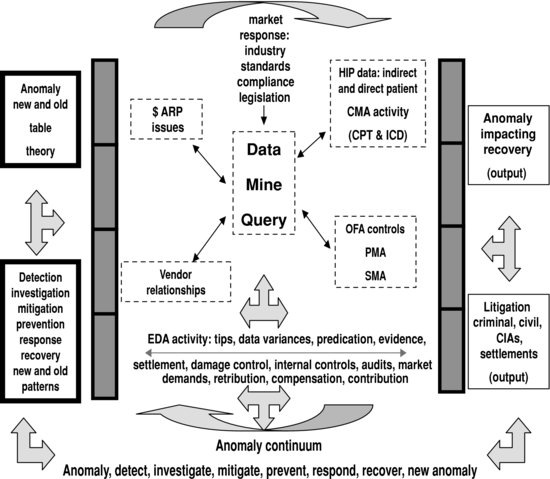Data Analysis Model Overview: Implications for Prevention, Detection, and Investigation
Exhibit 20.7 highlights an overview of the models presented in this chapter. It is a visual representation of the referential analysis (Exhibits 20.1–20.6) that is required by market segment and as a whole. EDA provides the opportunity to conduct this referential analysis electronically. EDA addresses the management of high volume, segmented and fragmented operational structures, segmented and fragmented contractual arrangements, and complex clinical regimens. EDA provides the opportunity to find the needle in the haystack. This cannot be done without electronic data mapping and data mining tools or without understanding the operation dynamics of all parties. The development of each P-HCC player, in terms of its financial structure, is important in the prevention, detection, and investigation of healthcare waste, fraud, and abuse.
Exhibit 20.7 Macro- and Micro-Anomaly Model

Each primary healthcare continuum player will have independent and codependent data that is associated with and impacted by the remaining continuums. Again, the S-HCC is about benchmark data. The I-HCC is about the movement of health information and its mechanics. The C-HCC will vary by each player. Each player will also have different types of transparency issues or road blocks, as noted when the T-HCC is applied. Finally, ...
Get Healthcare Fraud: Auditing and Detection Guide, 2nd Edition now with the O’Reilly learning platform.
O’Reilly members experience books, live events, courses curated by job role, and more from O’Reilly and nearly 200 top publishers.

